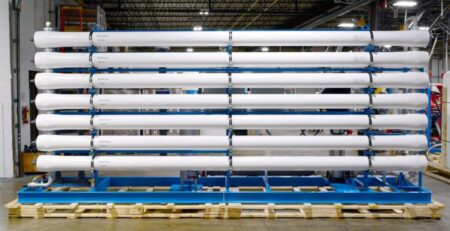Best Practices for Operation & Maintenance of Tailings Storage Facilities for Wastewater Treatment
Tailings storage facilities (TSFs) are engineered to serve as depositories of the residual substances generated from industrial operations, specifically mining, petrochemicals, and construction. The proper operation and maintenance of TSFs are essential to the efficient and effective management of wastewater treatment processes. Poorly managed TSFs can pose significant threats to the environment and human health, leading to long-term damage and potential disaster.
TSFs are critical components of wastewater treatment processes in various industries. They are specially designed to store and manage waste materials, including tailings, which are the by-products of industrial processes. TSFs are typically lined with materials such as clay, concrete, or synthetic liners to prevent the leakage of contaminants into the environment. The size and design of the TSF depend on the type and amount of waste materials produced.
Design and Construction of Tailings Storage Facilities
Tailings are usually fine mud or powder left over after metallurgical processes have been completed. It contains valuable minerals and sulphides, chemicals used in metallurgical processes and a variety of trace metals, which must be managed properly to ensure safe disposal and protect the environment.
Proper site selection and characterization are essential for the successful construction of TSFs. The site should be located away from sensitive environments such as rivers, lakes, or residential areas. The soil and rock formations should also be characterized to ensure that the TSF’s construction materials are appropriate for the site’s geological conditions. The TSF’s design should consider factors such as adequate capacity, appropriate construction materials, and techniques that minimize the risk of failure. Leak detection systems, like geomembranes or other synthetic liners, should also be installed to prevent the leakage of contaminants into the environment. Additionally, ongoing monitoring and quality control are essential to ensure that the TSF is operating efficiently.
Tailing storage facilities are designed to protect the surrounding surface and groundwater from contamination. This is achieved by creating barriers and collection systems to safely control seepage in the impoundment area.
Best Practices for Operation of Tailings Storage Facilities
Proper operation and maintenance of the TSF are essential to ensure that it functions effectively. Regular inspections and monitoring are necessary to identify potential problems and to prevent failures. Proper filling and decanting procedures should be followed to maintain proper water levels and prevent sediment from leaving the TSF. Proper pressure, temperature, and pH levels should also be maintained to prevent damage to the TSF’s liner and prevent the release of contaminants. To guarantee safe handling and conformity to regulatory mandates, it is crucial to observe appropriate protocols for waste management.
Establishing a stable water balance and incorporating appropriate controls and infrastructure to mitigate against potential problems occurring during the design, operation and closure stages.
A well-designed system for water management at a TMF will be capable of managing any unforeseen fluctuations in inflows and outflows, and any potential threats such as storms. In addition, a good water balance will allow the tailings to drain quickly and easily without overly ponding.
Best Practices for Maintenance of Tailings Storage Facilities
Performing regular upkeep is crucial to sustain the optimal performance of the TSF and to detect possible predicaments before they become severe. Additionally, following proper waste disposal procedures is vital to guarantee safe handling and conformity to regulatory prerequisites. Regular cleaning and repairs are also essential to ensure that the TSF is functioning correctly. The TSF’s maintenance should also include the implementation of an emergency response plan and the proper maintenance of equipment such as pumps and valves.
Maintaining proper water levels, pressure levels, temperatures, and pH levels are critical for the safe and efficient operation of TSFs. Frequent monitoring and corrective actions should be taken promptly to prevent any adverse effects on the environment or the wastewater treatment process.
Tailings storage facilities for wastewater recovery are crucial to the long-term safety and environmental performance of these facilities. These include minimizing the impact of tailings on surface and underground water systems.
In addition, it is essential to maintain minimum freeboard levels within a TMF. This is achieved by controlling the phreatic surface of the tailings to reduce seepage and internal erosion.
Risk Assessment and Mitigation Associate with Trailing Storage Facility
Risk assessment is an essential component of the operation and maintenance of TSFs. The assessment should identify potential risks, including structural, environmental, and human risks. Emergency response planning and preparedness are also essential components of risk management. Regular review and updating of risk management measures are also necessary to ensure that the TSF is operating safely and in compliance with regulatory requirements.











